In the ever-evolving landscape of business, adaptability and innovation have become the cornerstones of success. Organizations are constantly seeking ways to enhance their agility, streamline processes, and deliver value to customers more efficiently. This pursuit of excellence has led many enterprises to embrace the Scaled Agile Framework, or SAFe®, as a means to navigate the complexities of organizational transformation. In this blog, we will delve into the journey of implementing SAFe® and explore the transformative power it holds.
Understanding SAFe®: Beyond the Basics
Scaled Agile Framework, or SAFe®, is more than just a set of practices or methodologies; it’s a holistic approach to scaling Agile principles across an entire organization. SAFe® provides a structured framework that aligns teams, departments, and even entire enterprises towards a common goal. By blending principles from Agile, Lean, and product development flow, SAFe® offers a comprehensive solution for organizations aiming to scale their Agile practices effectively.
The Challenge of Transformation
Undertaking an organizational transformation is no small feat. It involves a shift in mindset, processes, and sometimes even culture. The journey of implementing SAFe® begins with acknowledging that transformation is not merely about adopting a new framework, but about fostering a culture of continuous improvement and collaboration. This requires buy-in and commitment from all levels of the organization, from executives to individual team members.
Key Pillars of Successful SAFe® Implementation
- Leadership Engagement: Leadership plays a pivotal role in driving change. Executives and senior management need to actively support and champion the SAFe® implementation, demonstrating their commitment to Agile values and practices.
- Training and Education: Equipping teams with the necessary knowledge and skills is crucial. Providing SAFe® training to all involved parties helps create a common language and understanding of the framework.
- Lean-Agile Mindset: Transforming the organization’s mindset from traditional command-and-control to a Lean-Agile mindset is foundational. Embracing Lean thinking and Agile principles lays the groundwork for sustainable change.
- Agile Release Trains (ARTs): ARTs serve as the building blocks of SAFe® implementation. These cross-functional teams work together to deliver value at a consistent cadence, fostering collaboration and alignment.
- Continuous Improvement: SAFe® encourages a culture of relentless improvement. Regularly assessing processes, outcomes, and feedback helps identify areas for refinement and optimization.
Benefits of SAFe® Implementation
- Alignment: SAFe® aligns teams and departments towards a shared vision, enhancing collaboration and reducing silos.
- Faster Time-to-Market: By emphasizing value delivery and shorter release cycles, SAFe® accelerates time-to-market for products and features.
- Reduced Risk: SAFe® provides a structured approach to managing risk, ensuring that potential challenges are identified and addressed early in the development process.
- Improved Quality: Continuous integration, testing, and customer feedback lead to improved product quality and customer satisfaction.
- Employee Empowerment: SAFe® empowers teams to make decisions, fostering a sense of ownership and accountability.
Conclusion
Implementing SAFe® is a transformative journey that demands dedication, collaboration, and a commitment to continuous improvement. It’s not a one-size-fits-all solution, but rather a customizable framework that can be adapted to meet the unique needs of an organization. By embracing SAFe® and its principles, organizations can navigate the complexities of scaling Agile practices, fostering innovation, and achieving a competitive edge in today’s dynamic business landscape. Remember, the path to success is not just about adopting a framework—it’s about embracing a new way of thinking and working that empowers teams and drives meaningful change.



